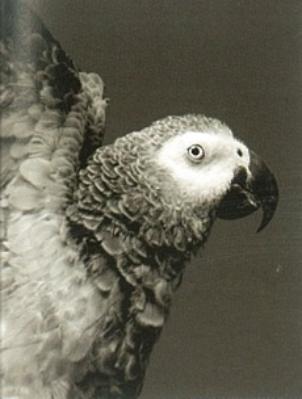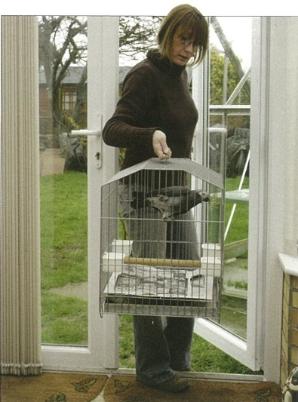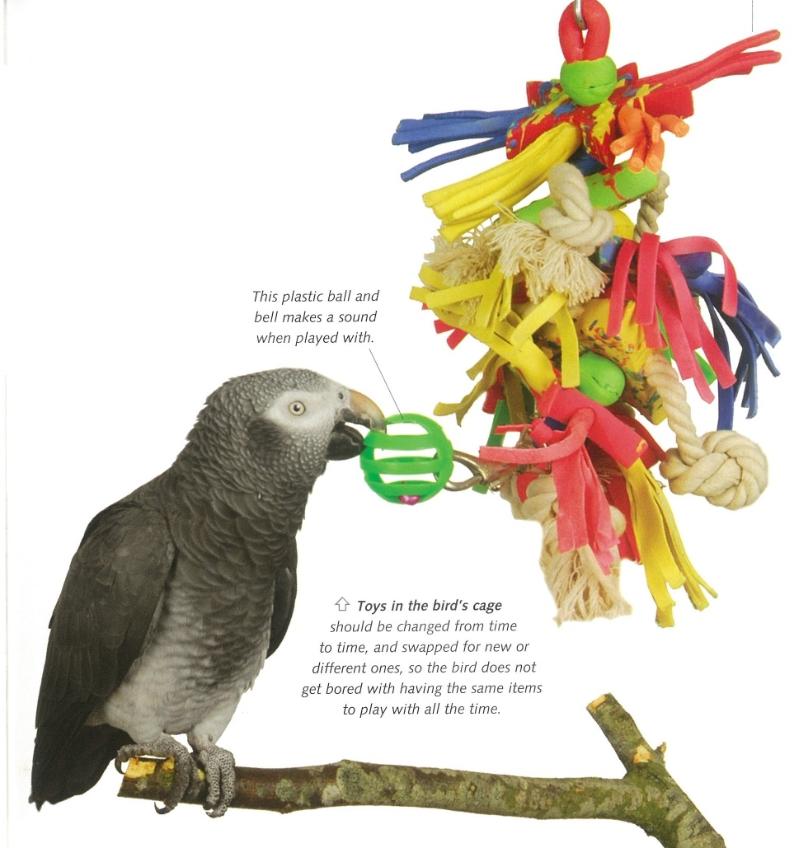Grey parrots are popular as 'pet' birds partly because of their well-known abilities as mimics. However enticing the idea of a parrot with a good 'talking' ability is, this should not be the main reason for acquiring one of these birds. As with other parrots, greys - even captive-bred ones - are not domesticated creatures and they retain all their wild-type behavioural needs and repertoire. The life of a grey parrot in the wild is very different from the life we ask them to lead in captivity. The key to keeping greys well as 'pets' is to enable them to carry out as many of their wild-type behaviours in captivity as possible. Unless they are kept by owners who understand these needs, problems - particularly behavioural problems - may soon crop up.
They are also very intelligent and in captivity they need to be kept occupied with a range of 'tasks'. This can include playing with a variety of toys and, most importantly, not being kept for long periods in a cage or in its aviary every day. For the sake of the bird's mental and physical well-being, it will need to be out of the cage with you for many hours each day, so a grey parrot is not an 'easy maintenance' pet. Once they are no longer immature (at around two to three years old), some greys are inclined to become 'oneperson' birds and they may reject having anything to do with anyone else, other than their favoured person. The tendency for this to occur can be reduced by suitable training, as discussed later.
Greys are 'high maintenance' pets
In general greys are, almost by default, nervous, even suspicious, birds. This stems simply from the fact that as a species they are highly vulnerable to being preyed upon by a variety of other creatures, including humans. It is literally 'in their genes' to be very cautious about things going on around them and they are often suspicious of seemingly harmless objects or actions. If this aspect of their disposition is not understood, grey parrots can become very fearful birds, even becoming afraid of their main carers. They easily recognise people as different individuals. Just because a grey likes one person does not mean that someone else can (or should) handle it.They are also very intelligent and in captivity they need to be kept occupied with a range of 'tasks'. This can include playing with a variety of toys and, most importantly, not being kept for long periods in a cage or in its aviary every day. For the sake of the bird's mental and physical well-being, it will need to be out of the cage with you for many hours each day, so a grey parrot is not an 'easy maintenance' pet. Once they are no longer immature (at around two to three years old), some greys are inclined to become 'oneperson' birds and they may reject having anything to do with anyone else, other than their favoured person. The tendency for this to occur can be reduced by suitable training, as discussed later.

Greys raise and stretch their wings as a greeting gesture,
as though saying 'Hello'. This is usually seen when they recognise another bird or person already known to them.
as though saying 'Hello'. This is usually seen when they recognise another bird or person already known to them.

Try to get your bird used to a carrying
cage which you'll need for future transport.
cage which you'll need for future transport.
